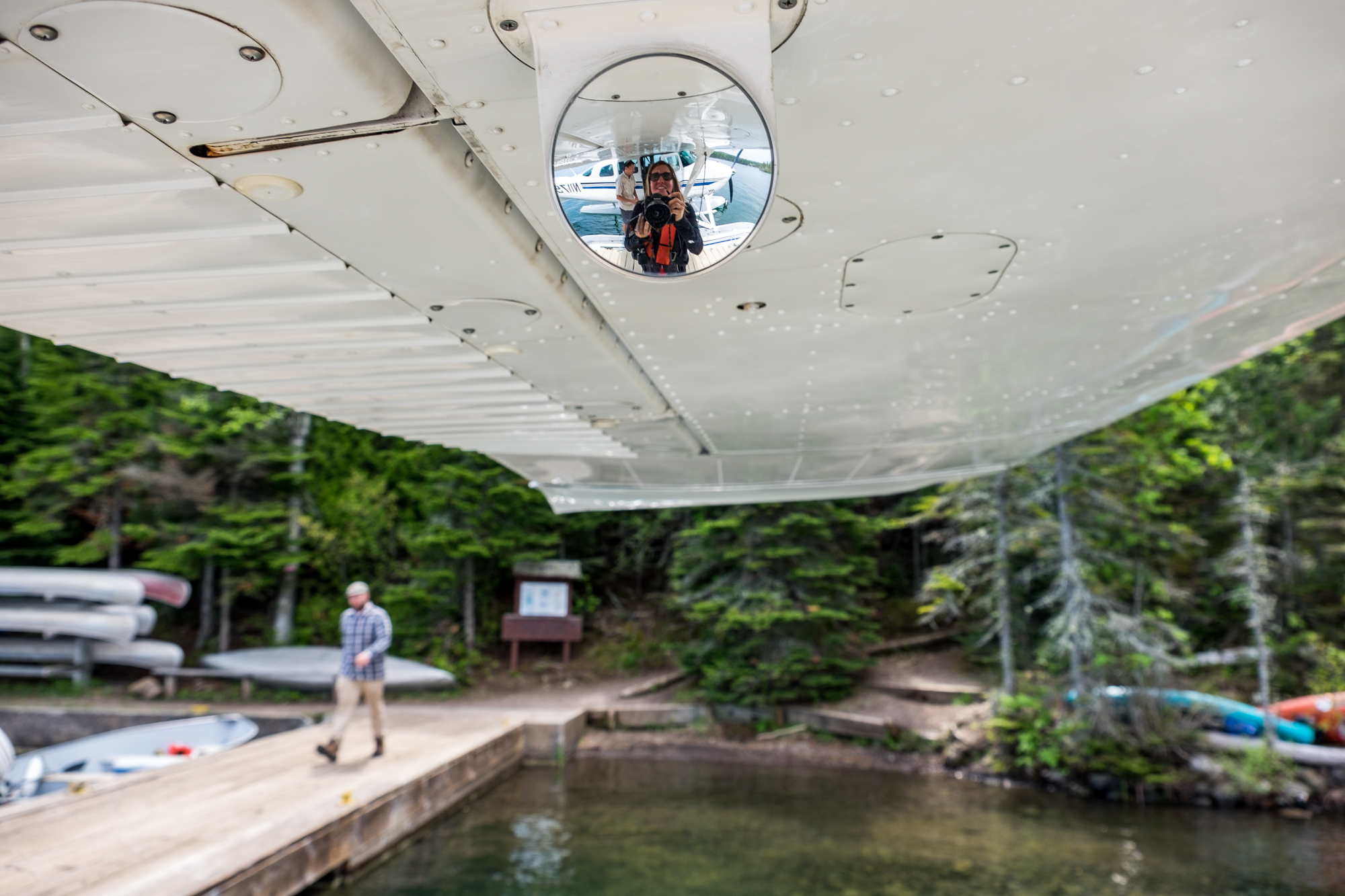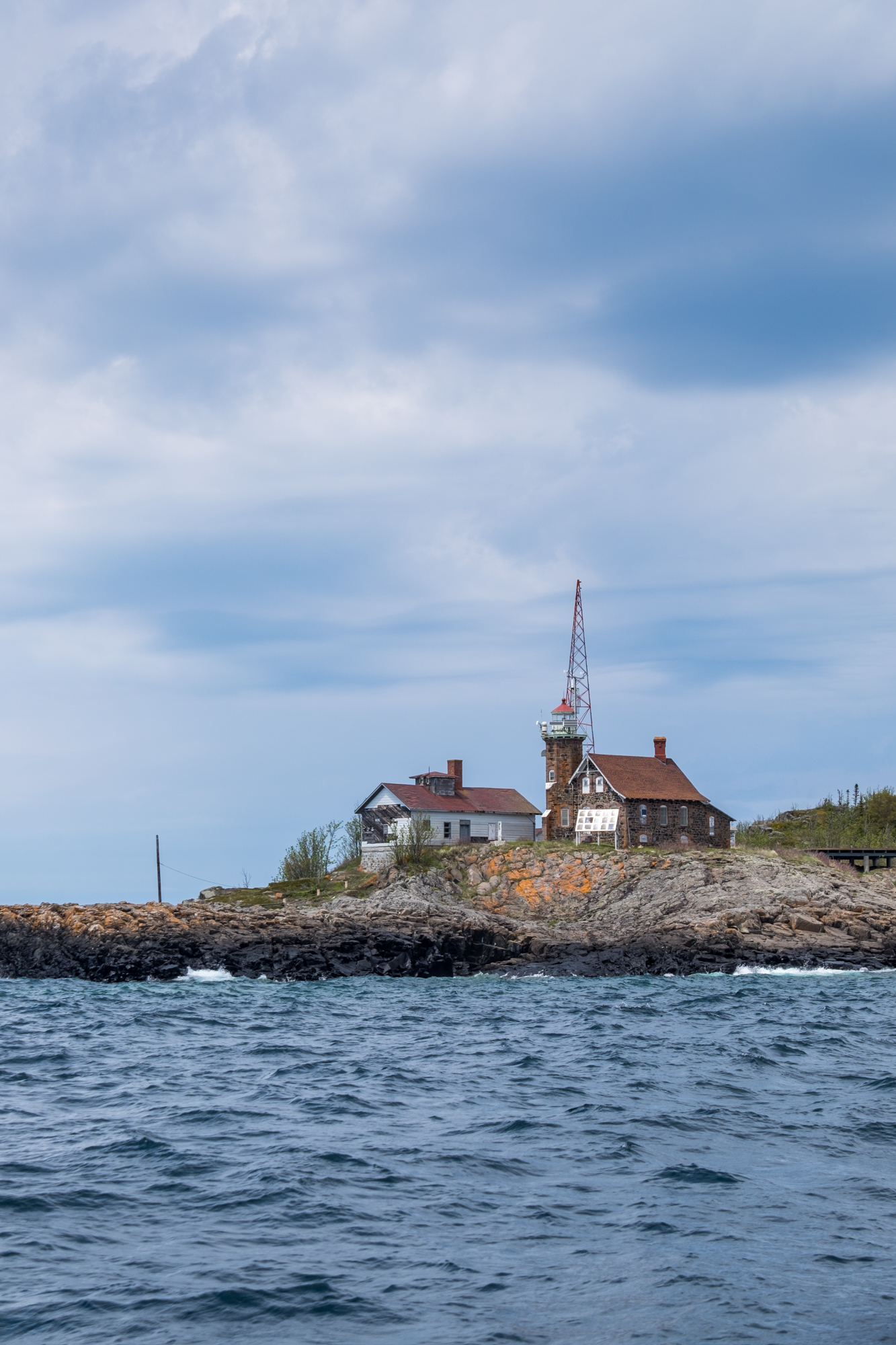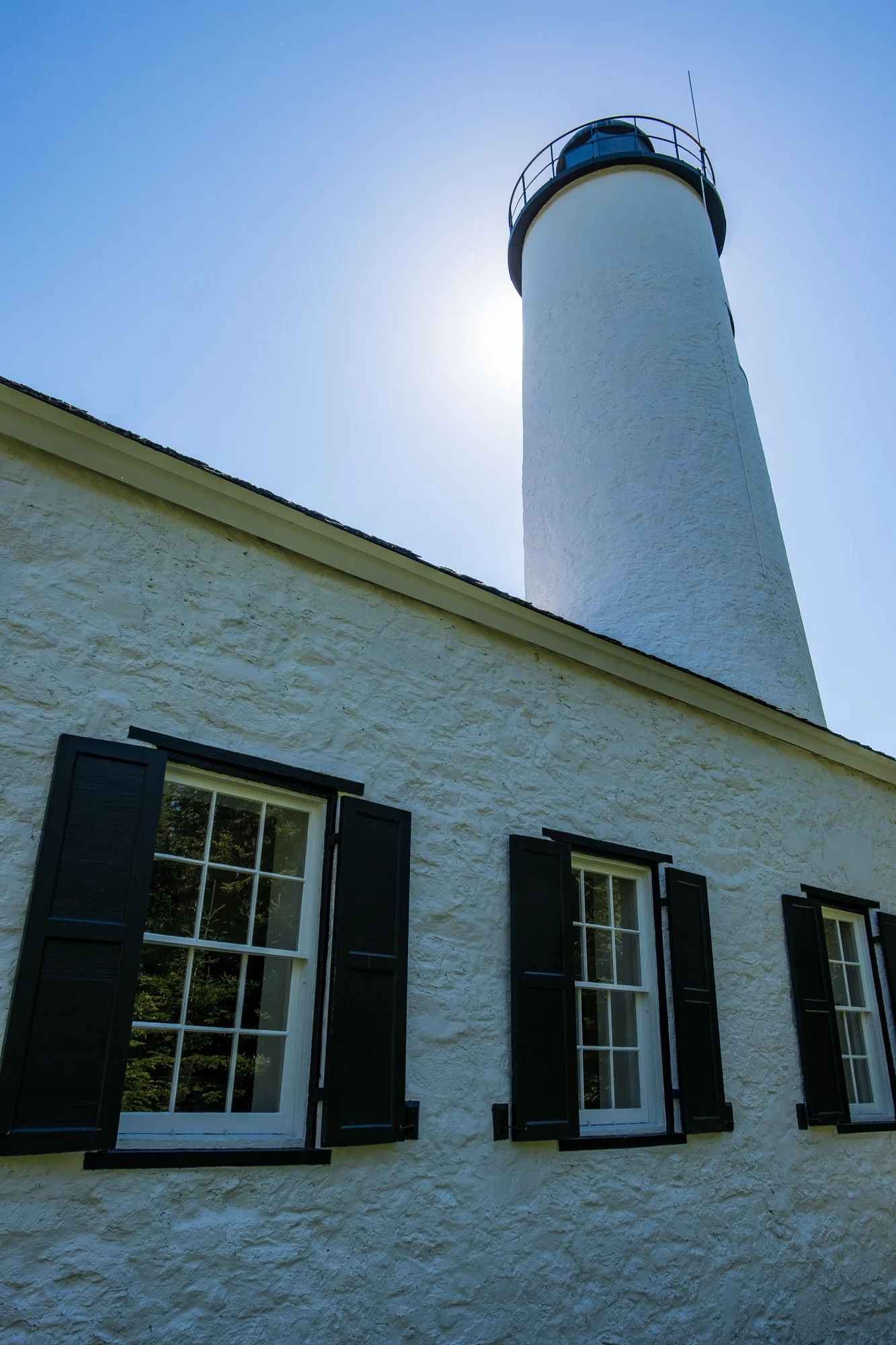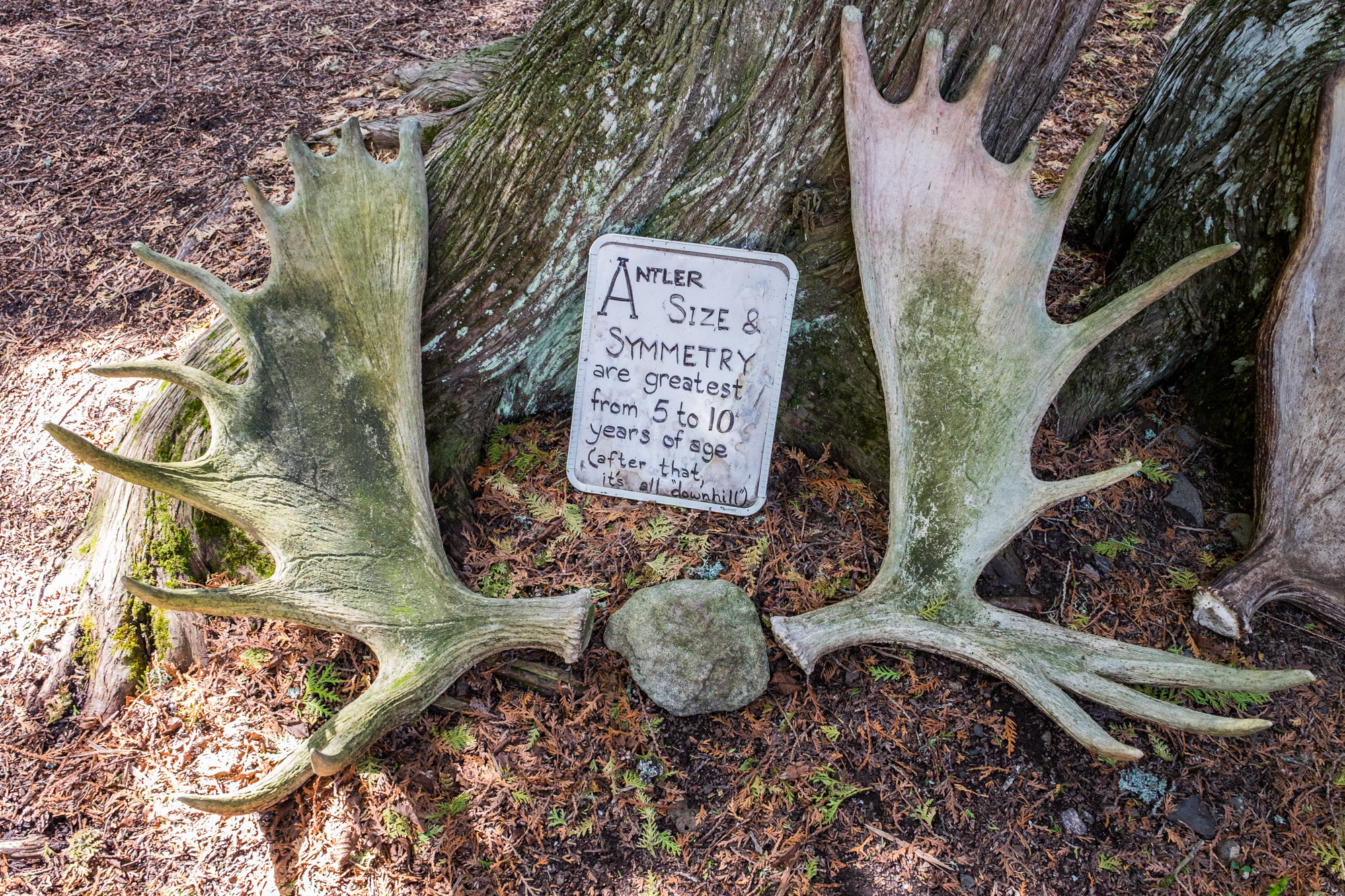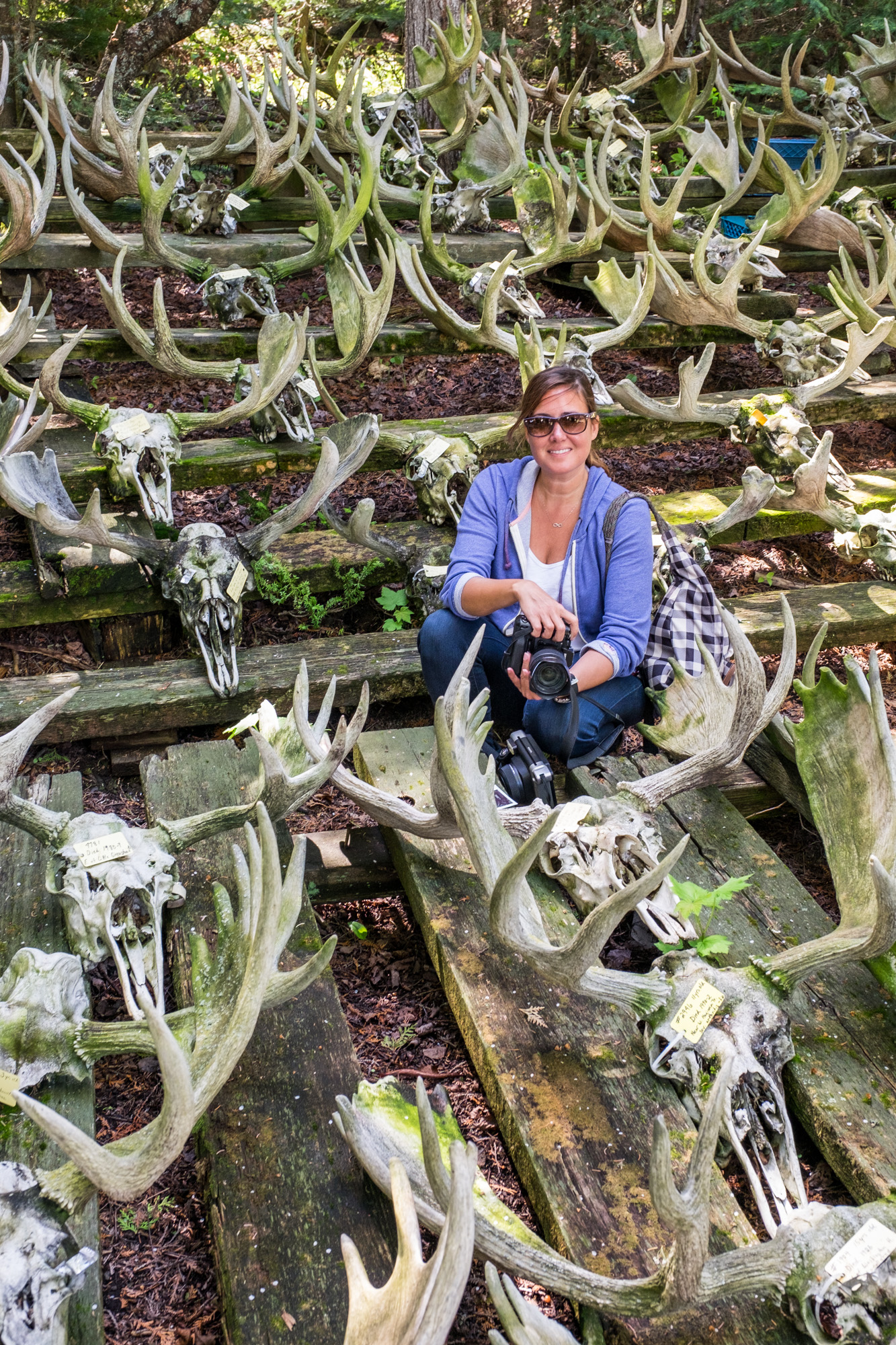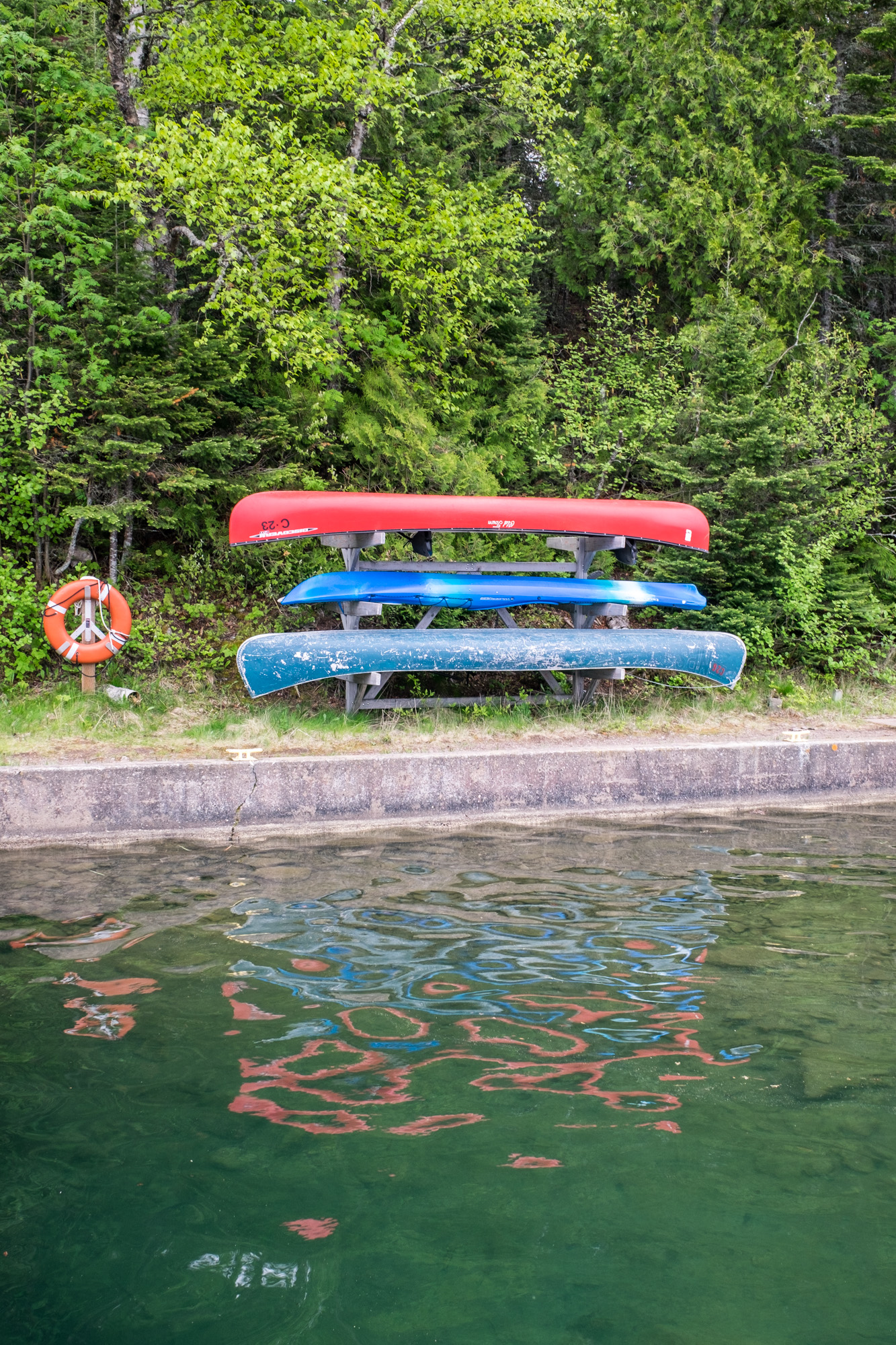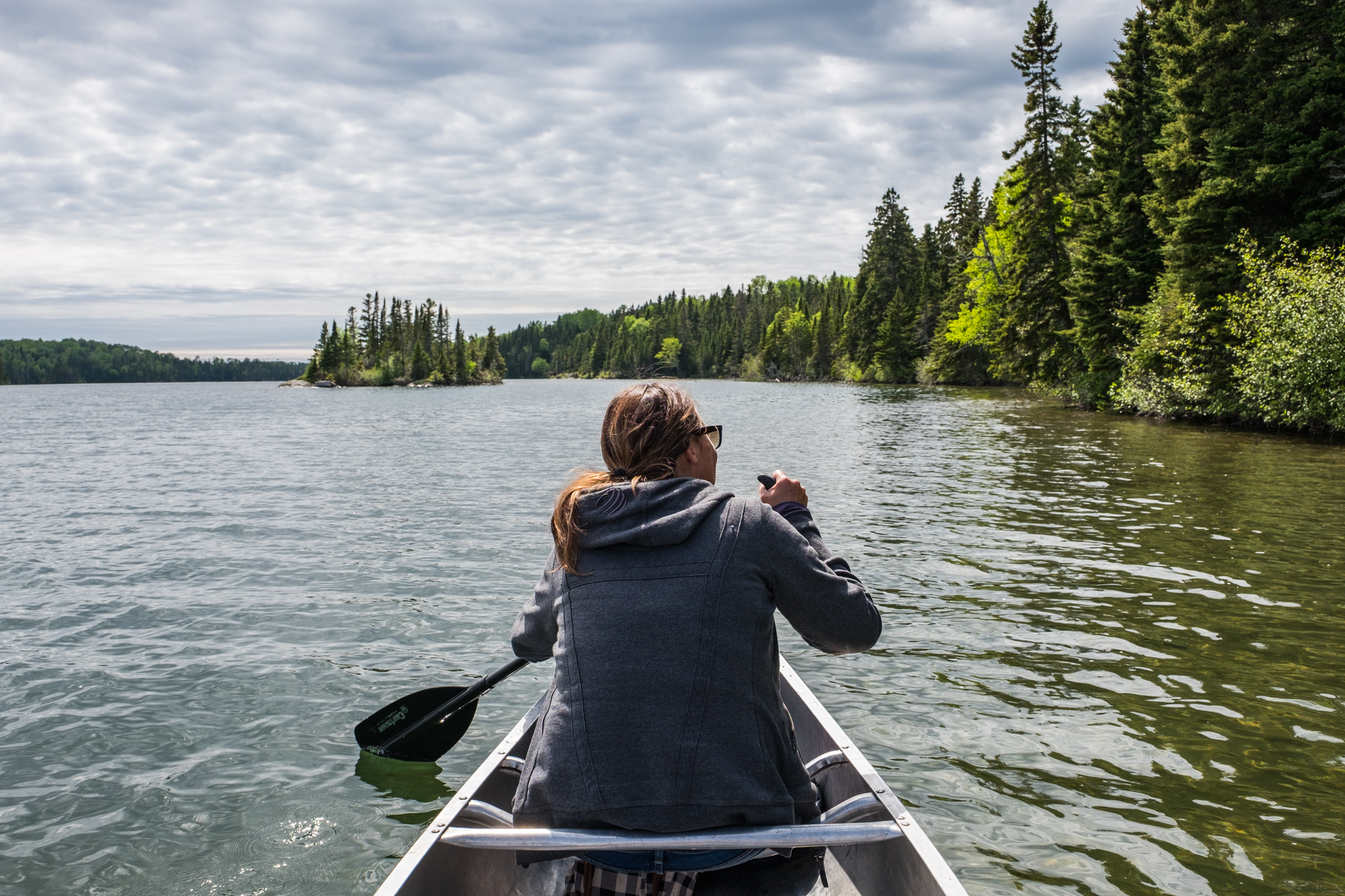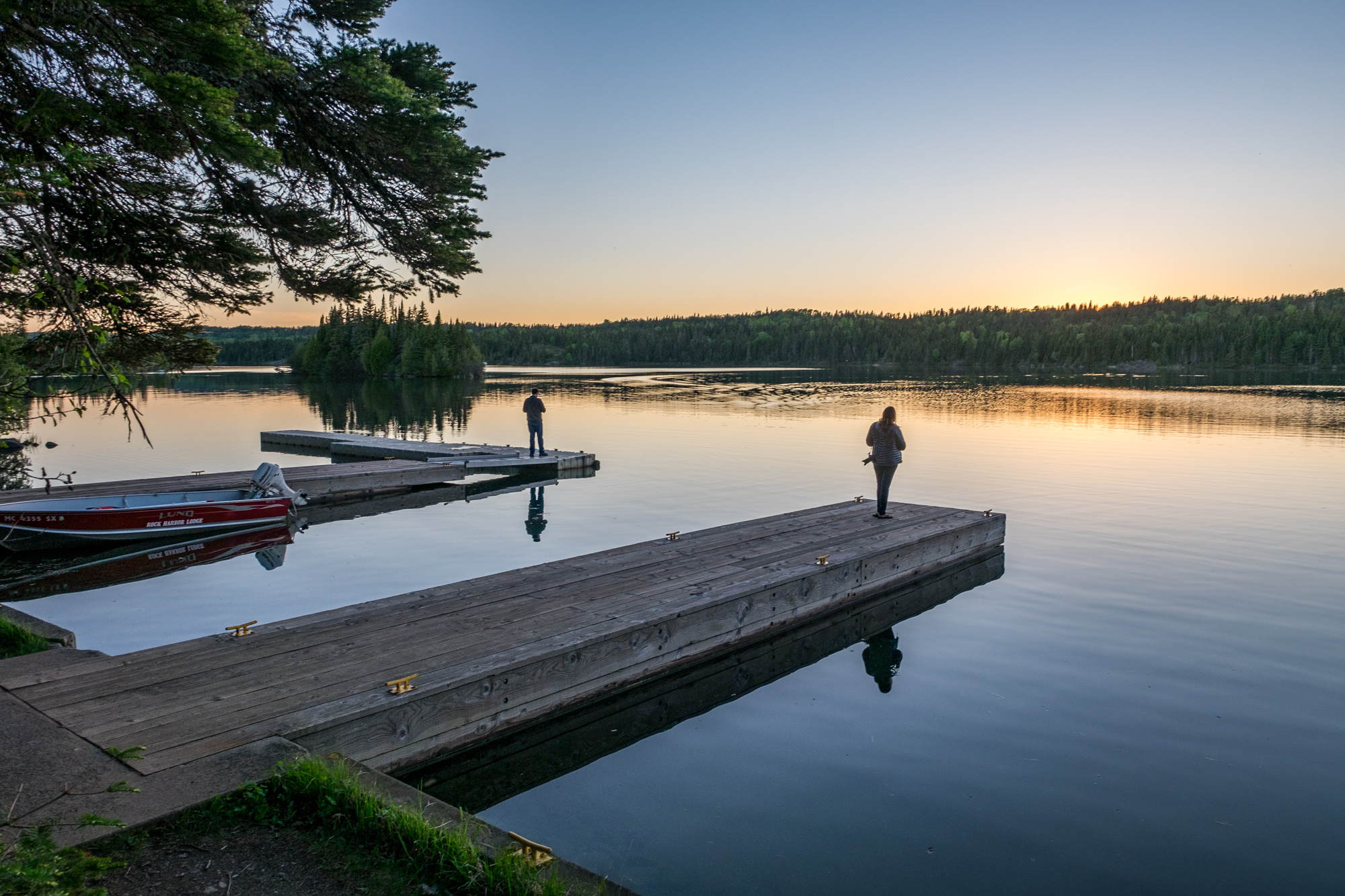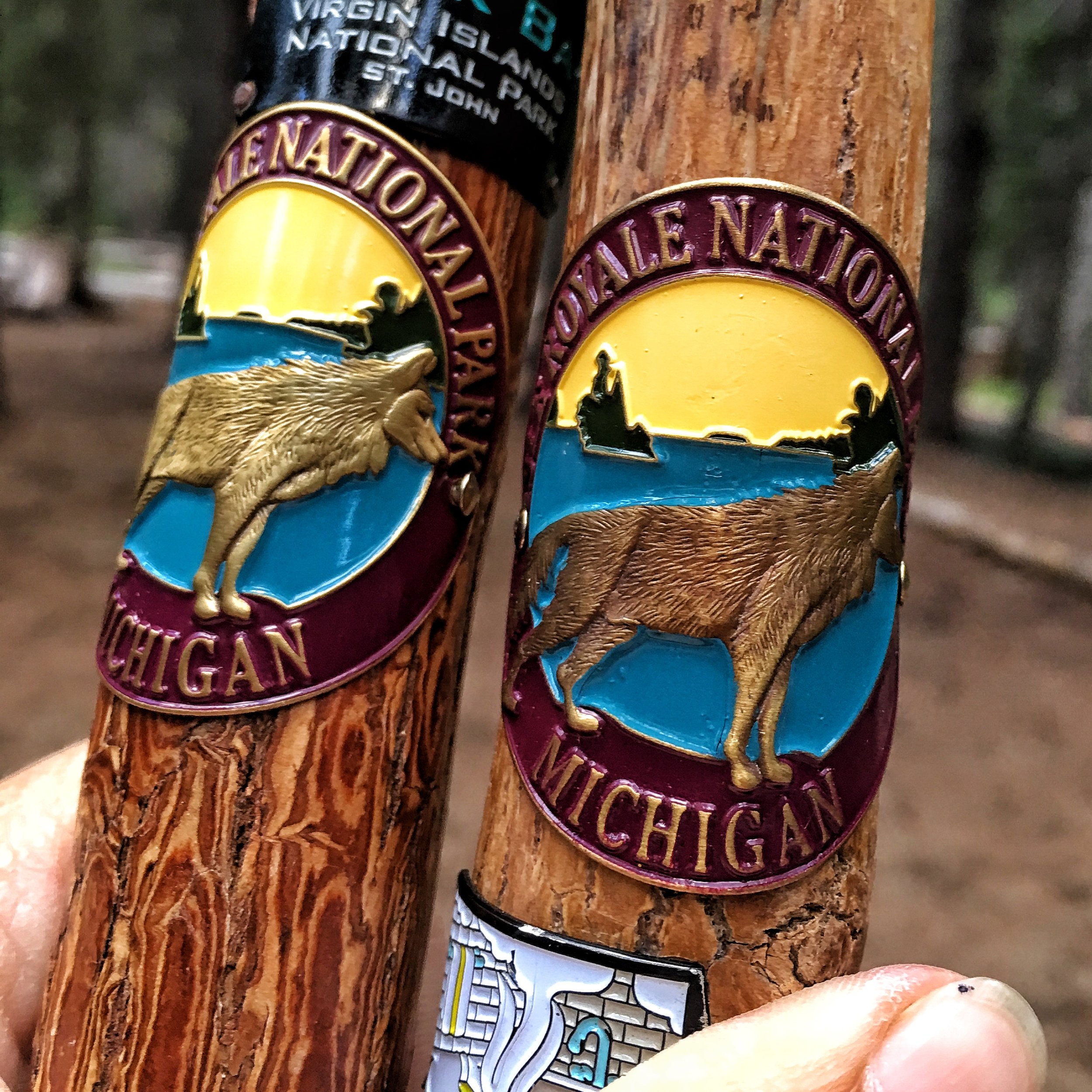Isle Royale National Park, Michigan, USA | Park 28/59
The Most Revisited National Park: Isle Royale
Isle Royale National Park in Michigan is one of the least visited national parks in the U.S., and the most revisited... it is wild, untamed, and in the middle of Lake Superior -- completely isolated and wonderful.
Michigan's Isle Royale National Park is one of the least visited national parks, and the most revisited. Formed by the world’s largest lava flow and sculpted by glaciers for millennia, the island rises from the depths of Lake Superior (which might as well be an ocean when you look at its size and behavior) and is accessible only by sea vessel or by float plane. It is remote and it is wild; two factors that make a visit here a challenge, one that visitors are thrilled to take on. Price is another deterrent—equipping a remote island with supplies for visitors comes at a turn-key cost. And then there is the forbidding northern climate—it is virtually impossible for a layperson to travel there during the winter months, and as a result, Isle Royale is the only national park in the system that is closed entirely during the winter season. When it opens each year in May after seven months operating solely under the guidance of Mother Nature, the island comes to life. Moose come out to feed on aquatic grasses that breed in inland lakes. Loons sound their magnificent call on the coastal waters. Wildflowers and berries color the baseline of the hardwood conifer forests... if you stand still in one spot and listen to the surroundings, you will hear the natural world at work.
Such living rawness is of great allure. On this island in the middle of the world’s second largest freshwater lake, there are no communications signals, nor throngs of people that alter the landscapes the way they do at most other national parks—there is no land in sight in any direction… it’s just you and the world.
Just another day in our national parks... Stef bushwhacking Isle Royale with the world authority on moose and wolves!
Adventure enthusiasts keen to kayak the rocky coastline, portage inland lakes and streams, and hike and camp throughout undeveloped wilderness arrive and quickly disappear into the rugged ridges and shorelines. Seekers of solitude come to experience a place where the only mode of travel is on foot, by self-propelled watercraft, or by motorboat. Families head out on guided sightseeing boat tours that provide access to historic places on the island. Wildlife fans take a rare opportunity to talk with the world authority on the wolves and moose—Isle Royale is home to the longest continuously running predator/prey study in the world, research that enables a better understanding of their behavior and how it impacts the ecosystem of the island; and as an extension, collective wildlife ecosystems on Earth. Early and late in the season, when the sky is at its darkest, astro-buffs get their fill when the enchanting Aurora Borealis can be seen dancing with green, red, and purple bands of color.
Isle Royale will not offer you its beauty on a platter, your participation is key. The mountains do not descend on you the way they do in parks like Yosemite. The wildlife is more reclusive here than it is in other places. Most of your hiking trails will require a bit of bushwhacking. In this park, your adventure truly is as good as you make it. There to help you refine your next adventure is the National Park Service staff and the team at the Rock Harbor Lodge, the only accommodation on the island, who are as thrilled to be on the island themselves as they are to open it up for visitors like us to enjoy. And enjoy we did. It came as a surprise to us that such a magnificent backcountry wilderness exists in this area of the country. We had no reason to believe otherwise, we just didn’t know about it. But after a few days, it became clear why this park is the most revisited—its almost impossible not to be planning another adventure (“future tripping” we call it) when you are knee deep in Isle Royale.
**Special Section** Inside Isle Royale With Resident Experts
In the field with Rolf Peterson, the head of the longest continuously running predator-prey study in the world, the wolf and moose.
Isle Royale has two distinct and enticing features that we wanted to explore more for our readers in separate articles that will live in the Extras section of this website; two fantastic reasons to visit Isle Royale!
The island is home to the longest continuously running predator/prey study in the world, where researchers have documented the lives of the wolves and moose for more than 5 decades. To learn more, we spent the day in the field with Rolf Peterson, a world authority on wolves and moose. Read more about the wolves and moose of Isle Royale from the leading expert on the subject.
““Wolves directly affect the entire ecosystem, not just moose populations, their main prey, because less moose equals more tree growth” ”
Marina Alexander leads Stefanie Payne into the wilds of Isle Royale, Marina's second home -- she knows of the places that just cannot be found by anyone but a local!
One of The Least Visited National Parks
Isle Royale is the least visited national park in the contiguous United States, offering a unique kind of solitude amid a remote island wilderness. To explore deeper, we met up with Marina Alexander, a local expert who calls the island her second home. She knows more than anybody about how and where to explore the island and its surrounding waterways. She now works at the Rock Harbor Lodge which has been managed by her family for decades. Get inside Isle Royale traveler advice from a local.
Quotable Images
Fact Box
571,790 acres | International Biosphere Reserve | America's most revisited national park
Official name: Isle Royale National Park
Location: Northwest Lake Superior, Michigan's Upper Peninsula (U.P.)
Date established: April 3, 1940
How the park got its name: Isle Royale, (French translation, Royal Isle) was named in honor of French King Louis XIV who sent trappers overseas in the 15th century to get in on the new world's fur trade. The United States gained possession of the island in 1783.
The oldest lighthouse on the island, the Rock Harbor Lighthouse, built in 1855.
Iconic site in the park: A boat ride from Rock Harbor to the Edisen Fishery and Rock Harbor Lighthouse is hands-down the most popular activity in the park. During the ride over you’ll have a chance to learn about the park, Rock Harbor, and Lake Superior aboard the Sandy with one of their seasoned captains. When you reach the shore, you can bust left for a short walk to the oldest lighthouse on the island (built in 1855), explore the museum, and check out relics of the old fishery; or you can jam right for a .3-mile hike (one way) to the home of Rolf and Candy Peterson, who lead up the longest continuously running predator/prey (wolf/moose) study in the world. We recommend seeing the three in that order—once you are talking wolf/moose preservation with the foremost experts on the topic, almost nothing can grip you away (aside from your ride back to Rock Harbor sounding the call.)
Accessible adventure: There are many great day hikes, easy paddles, and wildlife viewing opportunities to be had on the island. To experience them, head out on one of the guided tours leaving from Rock Harbor aboard the Sandy sea vessel. There are itineraries leaving every day of the week except for Sunday, covering a lot of shoreline and providing glimpses of this remote island without having to get tangled up in backcountry.
Big adventure: For many, hiking the length of Isle Royale is a must-do item on their wilderness bucket list and with pure, unadulterated surroundings, we can see why. It is 45 miles (72 km) in length, 9 miles (14 km) at its widest point with only rugged wilderness in between point A (Windigo) and point B (Rock Harbor). The hike takes 4-6 days, depending on how you pace your miles. Tired nights will be spent sleeping beneath some of the starriest skies in the lower 48.
Isle Royale from the air.
Did you know...
Isle Royale is pronounced Eye-uhl Royal. As in walk down the aisle; and of a royal bloodline.
The park is open only from late May through September each year. It is the only U.S. National Park to shut down entirely for the winter season.
Isle Royale is the most re-visited national park.
The average visit to one of America’s national parks is just hours; the average visit to Isle Royale is 3.5 days.
The shape of Lake Superior looks like a wolf; Isle Royale looks like its eye! :)
There are three common jumping off points to Isle Royale. They are, in this order: Houghton, MI, Copper Harbor MI, and Grand Portage, MN. The only way to get there is by private or public sea vessel and/or by seaplane. A boat ride will take about 6.5 hours; a seaplane, 30 minutes! Always considering time, we hopped on a flight with Isle Royale Seaplanes and are so glad that we did—our pilot was awesome, and the view was sublime. Had we had more time, we would have opted a ride one way on the Ranger III (a classic way to get to and fro) and the other by plane so we could’ve experienced both.
Rock Harbor, on the north side of the island is the most populous area and is where the only established lodging is, at the Rock Harbor Lodge. Windigo, on the south side of the island, is lesser visited and is favored by the backcountry set. There are National Park Visitor Centers in both, everywhere in between is undeveloped wilderness.
"U.P." is local slang for the Upper Peninsula of Michigan.
Isle Royale has many inland lakes and streams, and a rocky coastline that makes it difficult to beach a self-propelled watercraft, making it a premier destination for portaging. Portaging is a term used to describe the activity of paddling a distance, then making way on foot with kayak or canoe overhead (motorized vehicles aren’t allowed) to get to another waterway. Some portage routes are just feet; others are several miles. Grouped together, you can cover a lot of ground, work your body hard, and experience solitude in a way like no other. This is not an easy adventure; you need to have some chops to do this safely and in a way that you won’t want to die when you’re through. We met a man who was doing it on his own and creating a video about it. Wonder how he fared out there…
Cold-water diving is gaining popularity in Lake Superior. One of the main draws is lake-bottom shipwrecks that tell the tales of the area’s turbulent maritime past.
Lake Superior is the second largest freshwater lake in the world and has a reputation for thick fog, cold temperatures, and wild squalls that can create trouble on the water for even the most experienced paddlers.
One of the best places in North America to view the Aurora Borealis is on Isle Royale.
Isle Royale is a great place to see the Northern Lights. As Auroras are a solar phenomenon, they can be hard to predict, but there are websites out there providing very, very well-educated stabs at where and when they might appear brightest (something we check out in advance of a visit to help us plan sleep schedules.) We like this site. :)
The Greenstone flow that forms the backbone of the island is the largest known lava flow on the planet.
One of the things people love about Isle Royale is the peaceful environment. Quiet hours, 10:00 p.m. to 6:00 p.m. are recognized across the entire island.
The only restaurant on the island is at the Rock Harbor Lodge and it stops serving at 7:00 p.m. There is a small grocery, also closing in the early evening, where you can purchase food that can be cooked at the harbor barbecues or in your kitchen-equipped room, if you have one. Plan on altering your schedule when visiting this park, especially if you are a night owl! This is an early-to-bed, early-to-rise kind of place.
The Rock Harbor Lodge and the Harbor.
Some of the most experienced skippers operating in the park system operate boats in Isle Royale. Lake Superior is known for its rocky bottom and coastlines, and the U.P. for unpredictable weather. These are not easy waterways to traverse, and the boat captains we traveled with knew it all and were decisive, making us feel very safe on all of our outings.
In recent years, blue-green algae blooms have been documented in inland lakes on Isle Royale and filtering doesn't remove the bacteria. The water sources have other bacteria as well. This kind of thing is important for backcountry campers to be smart on before setting out. Bring a filtration system and iodine pills.
With 600 species of lichens in the park, Isle Royale is the record holder among all of the national parks for lichen diversity! (We nerd out on lichens every chance we get.)
Mosquitos and black flies are HUGE in Isle Royale, in every sense of the word. They hatch in late May and early June, making it a buzzy summer. The National Park Service website usually has information about how bad they are each year in their park alerts section. Bring bug protection!
Muscles are among the most endangered groups of animal organisms in North America; four species of them can be found on Isle Royale.
Loons are fascinating birds and happily call Isle Royale home. When near them, you will quickly see how they fear humans. Especially while on the water, make an effort to steer clear—human disturbance can cause them to abandon their nests.
Just a random abandoned house nestled somewhere in the wilderness on Isle Royale. Let's just say that peering through the windows for what was left behind was awesome!
Signs of Native Americans mining, tree-tapping, and fishing on the island date back more than 4,000 years.
Leave your beloved pets at home! They are not allowed on the island or on boats offshore.
Commercial exploitation of the area as a tourist destination started to grow rapidly in the early 20th century. A journalist named Albert Stoll Jr. from the Detroit News became a champion for the protection of the wilderness there, and ultimately because of his efforts, it became a national park in 1940, a designated Wilderness Area in 1976, an International Biosphere Reserve in 1980.
Like many of the national parks, when the park was established, several of the land owners were gifted lifetime leases.
The intermittent boat schedule combined with unpredictable weather can keep you on the island for periods of time longer than you maybe anticipated. It's always a good idea to plan in buffer days when organizing your air travel to and from the U.P.
There is a ton of incredible wildlife to spot on Isle Royale, including: moose, wolf (if you’re very lucky!), beaver, red foxes, red squirrels, otters, snakes, tortoise, and frogs. It’s a birder’s paradise as well—songbirds, osprey, eagles, ducks, and loons thrive in Isle Royale.
The average age of a moose is ten years old. The oldest in around 20.
The term "what in Sam Hill?!" was coined in Isle Royale after a local man who cursed constantly. Sam Hill was swapped in for the curse word, and the saying lived on!




